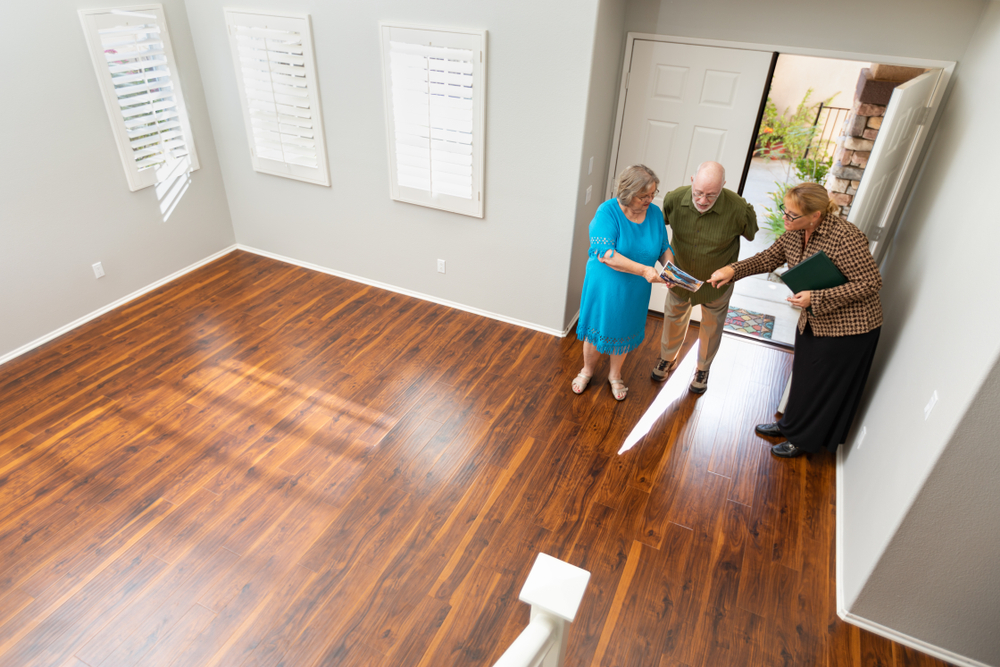House hunting can be an exciting time. Seeing all the homes on the market and imagining a future in each is exhilarating. But house hunting also requires serious consideration and an assessment of your financial situation. A home is often a family’s most valuable asset, and it is crucial to invest wisely. Having a checklist before starting the house hunting process is critical. If you know what to look for and avoid, you will focus on your needs and get value for your money. Knowing where you want to live, the house size, what kind of built-in kitchen appliances you want and other amenities will help you sort through the available housing to pick your perfect home. Explore this checklist of ideas to consider while out on your house-hunting adventure.
Establish a Budget
Before purchasing any home, you need to know if it is in your price range. To get a rough idea of how much you can afford, take your annual gross income (before taxes) and multiply it by 2.5. This number will give you a general idea of what you should be able to afford; however, there are some caveats. Your credit score and how much money you can put down as a down payment will affect your mortgage rate and budget.
Purchasing a home also has other costs that aren’t included in the list price, such as closing costs, HOA fees and other necessary repairs to bring the house up to code. Be sure to account for extra fees when calculating your budget.
List Your Must-Haves
Before you go to an open house or speak with a realtor, you need to know what kind of house you want. You should divide what you are looking for into three lists: must-haves, like-to-haves and nice extras. Categorize each area and feature of the house into one of these columns so that you and your realtor can narrow down available options and find the perfect home. Write down what your needs and wants are for:
- Number of bedrooms and bathrooms
- Square footage
- Outdoor areas like decks, patios, porches or a pool
- Attached or detached garage
- Number of floors and home layout
- Age of house
- Fixer upper or move-in ready

Wander the Neighborhood
The oldest rule in real estate is “location, location, location.” One of the best ways to get a good feel for an area is to simply wander around and check the availability and distance to amenities. See how far away the closest supermarket is, see where schools and parks are, check for loud or disruptive elements in the neighborhood like construction sites or busy freeways and see how the neighborhood feels. Is it welcoming or cold, family-friendly or more single people?
It’s a good idea to check out the home and neighborhood at different times of day too. Check to see if it gets busy during rush hour and how well the streets are lit at night. See how activity changes throughout the day and see if that matches your lifestyle. You can change many things about your future home, but the location is fixed. Make sure it feels like a good place to live and is convenient to all the locations and amenities you need.
Evaluate the Exterior Condition
Once you’ve found a house or a few different houses that meet your requirements, are well located and are in your price range, you need to ensure that they are in good condition. Walk around the outside of the home and check certain areas to see their current state, including:
- Paint or siding: chipped, cracked or flaking off
- Roof: missing tiles or shingles
- Exposed exterior wood: splitting, warping or splintering
- Yard or lawn: alive or dead; the status of the installed irrigation system
- Deck or patio: wood warping, splitting, discolored, cement chipped, broken or cracked
- Sidewalk and drive: cracked, broken or chipped
- Windows and trim: broken seals, missing screens, loose fitting
Outdoor damage can be expensive to repair and can indicate more significant problems, including water damage or foundation settling. Be sure to inspect everything yourself before paying for a professional inspection to confirm any suspicions.
Assess the Interior Condition
After checking the exterior condition, you need to schedule a walk-through with the real estate agent and assess all aspects of the interior. No one wants to invest in a money pit, and a thorough look around any home you are touring can help you see what’s behind the walls. Keep an eye out for:
- Walls, trim and ceiling: cracked, chipped paint, water damage
- Floors: carpet condition, stains, wood warping, cracked tile or grout, peeling linoleum
- Windows: open and close evenly, drafty
- Stairs: warped, creaky, unstable
- Kitchen: the condition of cabinets, appliances, countertops, potential under-sink water damage
- Bathrooms: leaks, water pressure, condition of fixtures
Get a good idea of the home’s general condition, and see what would need to be repaired, replaced or repainted before you move in. Check the costs against your budget to ensure you can still afford the home.

Check for Built-ins and HVAC
One area you need to look at very carefully when touring any home is the built-in appliances and the HVAC system. See if any kitchen appliances will come with the home, and check their condition. If there aren’t any or if they require replacement, price check kitchen appliance packages to see how much it would cost to bring the home up to your standard.
No matter your climate, it is crucial to test the HVAC system. Test the furnace and the air conditioner, check the status of all air filters and test ductwork for leaks. See if you need to add supplementary systems like a MRCOOL mini split for rooms where the HVAC system doesn’t heat or cool well.
Checklist for a Dream Home
The easiest way to find your dream home is to know what you are looking for. If you enter the process with a detailed list and check every home thoroughly, you can make a wise choice and a sound investment. Follow this checklist and buy a perfect home for today and an excellent investment for the future.

